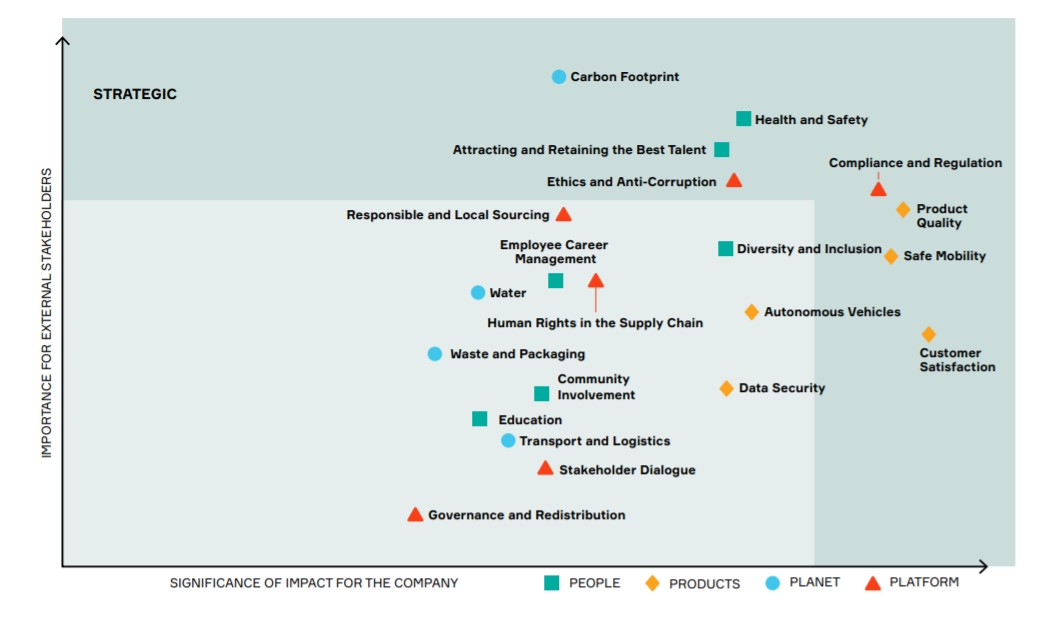What Is Sustainability?
The word sustainability has come to mean different things to different people. At its heart, though, sustainability is about designing systems so they continually make a positive impact on the environment, on the community and on society as a whole. For a business, sustainability means doing all of that while ensuring that it can sustain those efforts over time – remaining profitable, creating a diverse and inclusive company culture that attracts talent, and building products that offer real value to consumers.
To be sure, most often people think of sustainability only as an organization’s strategy to utilize resources so that they are neither depleted nor permanently damaged. But sustainability is evolving to include all aspects of how companies affect the world in which they operate. Sustainable companies are inspired to create a better world: one where they strive for cleaner air and water, where they behave ethically in all situations, where they nurture their employees and support their communities, and where they create products that make life better for everyone. Sustainable businesses don’t just treat these objectives as an afterthought — they are at the core of a viable and profitable business model.
In the mobility industry, sustainable companies encompass all of those ideals while creating a future with zero road accidents, zero vehicle fatalities and zero emissions. In that future, electric and autonomous vehicles are built with recycled or low-carbon materials and powered by renewable energy, and everyone has access to affordable, reliable and safe transportation.
Getting there will take active participation from a variety of stakeholders and require systematic measurement to monitor progress. Corporate objectives need to align with government regulations, employee values and customer needs. No one company can achieve it alone. For the end product to be sustainable, the entire supply chain has to be sustainable.
Sustainability is a team effort
To be successful at anything, organizations must be specific about their objectives and make sure their stakeholders (both internal and external) are on the same page. The same is true with sustainability.
Through a method called a materiality analysis, businesses can identify and prioritize the sustainability-related issues that are most important to their stakeholders. Those priorities vary by industry, region and organization. In the automotive sector, topics of concern include investments in self-driving technology and electric vehicles, whereas a commercial real estate developer’s goals might focus on designing green buildings that use solar panels, grey-water recycling and nontoxic construction materials.
Even within the same industry, companies can set different sustainability priorities. A properly conducted materiality analysis helps account for a wide range of viewpoints and provides decision-makers with critical insights to steer goal creation.
Sustainability requires measurement
Organizations can more clearly communicate their progress on sustainability by following standard frameworks, such as those developed by the Global Reporting Initiative and the Sustainability Accounting Standards Board. Using these frameworks helps companies depict a more holistic view of their overall performance, not just financial – which in turn builds trust with all stakeholders, including customers, suppliers, investors and employees.
Many in the mobility industry have set goals to eliminate carbon emissions by 2050 at the latest. But to achieve such a change, manufacturers first need to reach key benchmarks.
For example, Aptiv’s overarching goal is for our entire product portfolio — from source to disposal — to be carbon-neutral by 2040. We have set milestones that include reducing our carbon dioxide emissions by 25 percent by 2025, converting all of our operations in 44 countries to 100 percent renewable energy by 2030, and offering only carbon-neutral products by 2039.
Those milestones are part of Aptiv’s overall sustainability strategy to make products and solutions that not only are of the highest quality but also are designed, developed and manufactured responsibly to help transform society by enabling safer, greener and more connected mobility.
Sustainability at Aptiv
Aptiv works with internal and external stakeholders, along with independent experts, to identify top concerns in four high-level categories: people, products, planet and platform. Figure 1 shows the results of a materiality analysis Aptiv conducted in 2019.
The X-axis (horizontal), indicates significance for the company, while the Y-axis (vertical) shows the relative importance of topics for external stakeholders. Topics in the darker section are especially important for both groups and are therefore deemed strategic.
Aptiv ESG Materiality Analysis, 2019

Source: Sustainability in Motion: Aptiv 2021 Sustainability Report, p. 4.
However, a truly robust materiality analysis must evolve over time to respond to changing needs. That’s why Aptiv is conducting another review in 2022. By staying constantly connected, we take care of our people and communities, work to minimize our impact on the planet, and manage our company according to an enduring ethical platform.